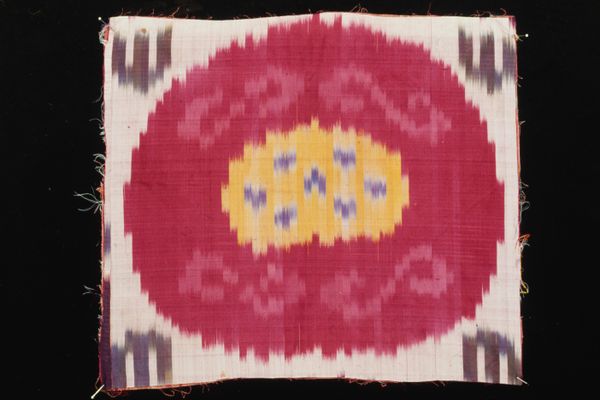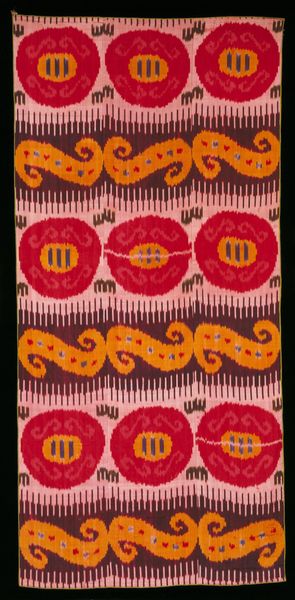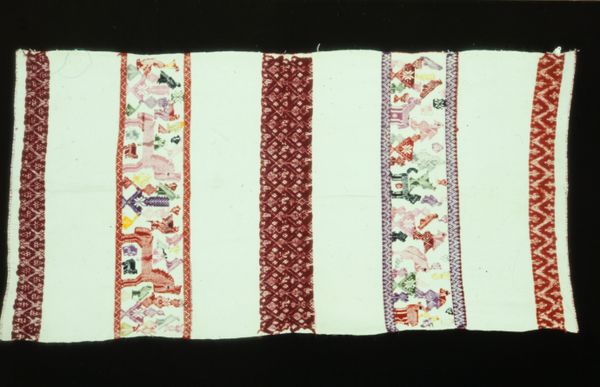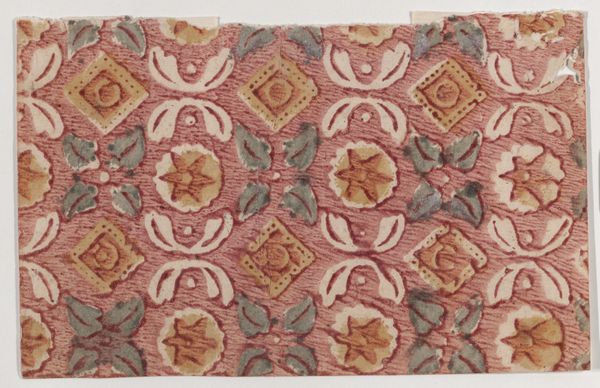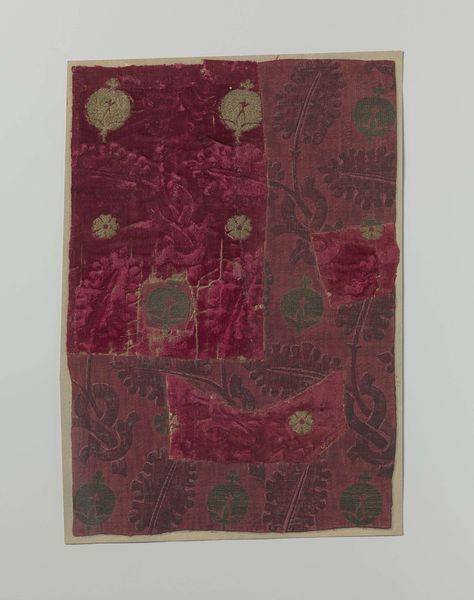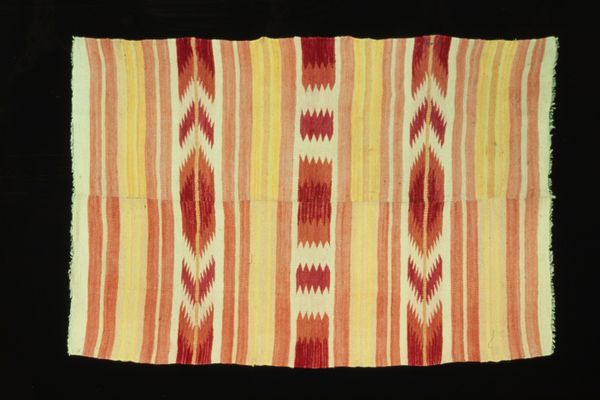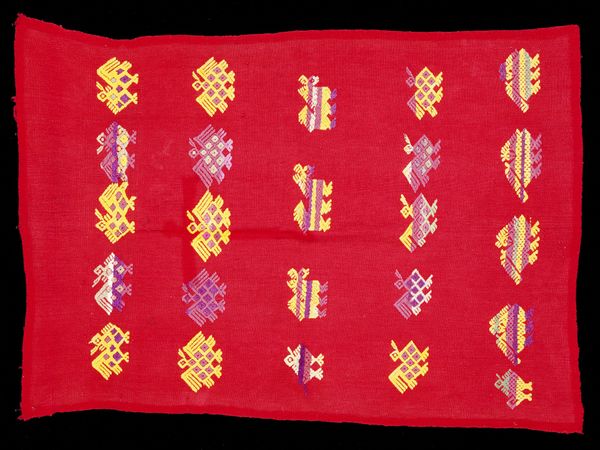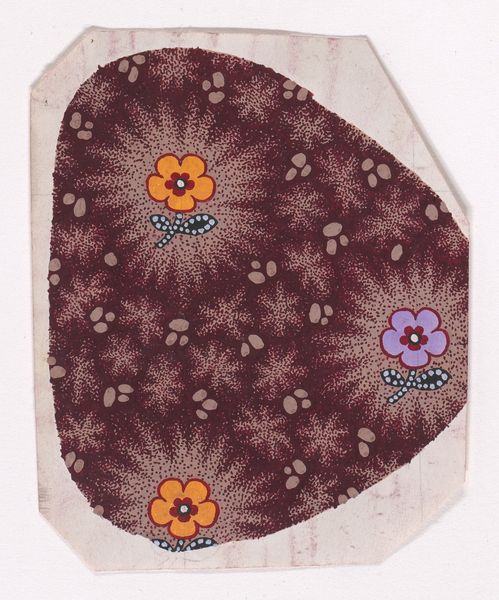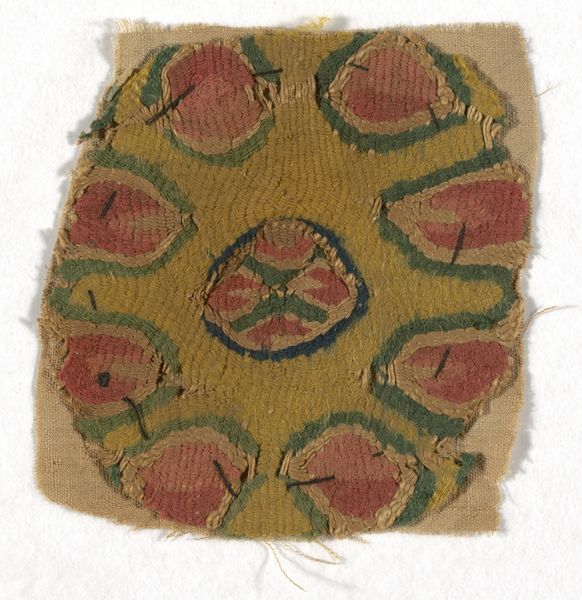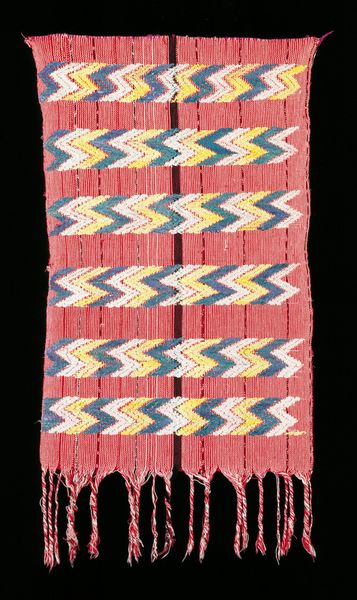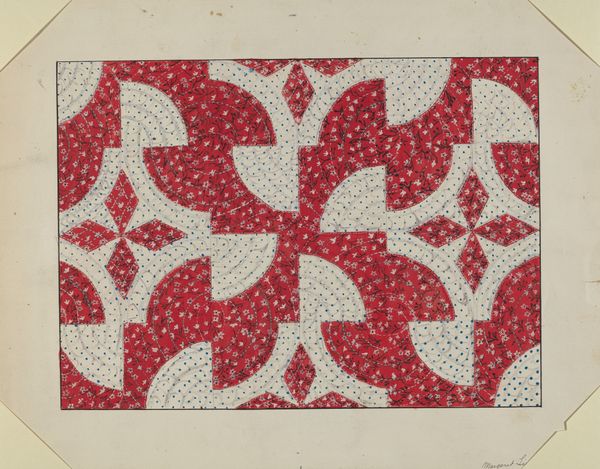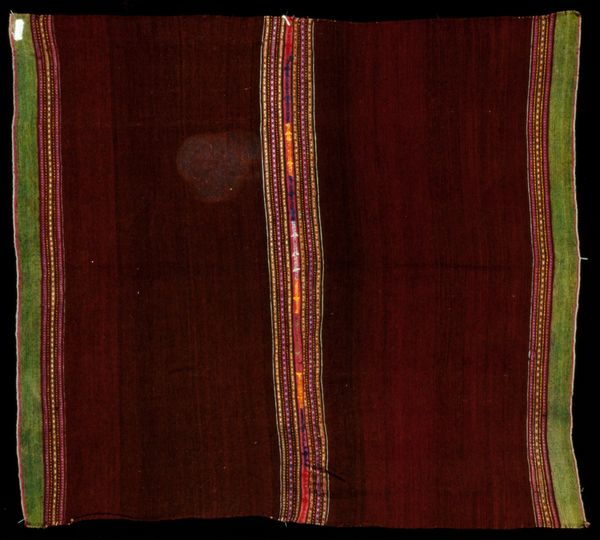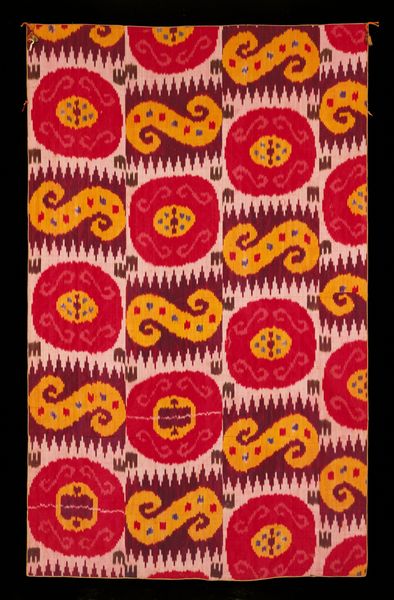
panel, silk, weaving, textile
#
panel
#
silk
#
pattern
#
asian-art
#
weaving
#
textile
#
organic pattern
#
geometric
#
orientalism
#
decorative-art
Dimensions: 32 1/2 x 21 1/2 in. (82.55 x 54.6 cm)
Copyright: Public Domain
Curator: Here we have a textile panel, most likely dating to the 19th century. It’s created with weaving on silk and is an example of Asian art, currently held at the Minneapolis Institute of Art. Editor: It’s incredibly vibrant! The design featuring these large circular motifs against that off-white background really grabs the eye. The colors, those purples, yellows, and crimsons, give it such a rich, almost royal feeling. What can you tell me about the context in which this would have been made? Curator: It’s important to remember that objects like these rarely exist in a vacuum. These textiles often reflected complex trade networks and social hierarchies. It likely represents the aesthetics favored during the era, intended to be both beautiful and indicative of the owner’s status. The motifs could relate to regional symbols of prosperity or religious importance. Editor: It’s interesting to think about how the materials themselves played a role. The use of silk and complex weaving techniques suggest access to resources and skilled labor, raising questions about power and who got to participate in art creation. It makes me consider labor rights as well. The textile’s potential use is intriguing. It looks like it would’ve made beautiful clothing. Curator: Well, beyond clothing, similar panels also frequently played roles as ceremonial cloths or even displayed as indicators of wealth. Given that we see repeating forms it points to the idea of ritualistic uses that needed multiples of this object type. We do not currently know who the maker or initial intended audience was. Editor: Right, that anonymity really brings up a point. The panel also echoes other similar weavings, blurring the line between individual artistry and communal heritage, underscoring collective memory. The orientalist aesthetic makes me question the legacy of that history. How much did western appropriation or romanticization affect our view, potentially overshadowing native voices. Curator: Those concerns are entirely valid when analyzing objects within museum collections. Overall, I think these types of historical discussions add dimensions beyond simply appreciating their aesthetic features, pushing us towards deeper examinations. Editor: Exactly, engaging in historical analysis transforms our perception beyond simply beholding beautiful things. We can reveal some very useful lessons for our present moment.
Comments
No comments
Be the first to comment and join the conversation on the ultimate creative platform.
